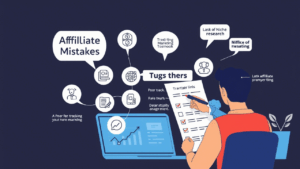Every day, over 150,000 domain names expire, and shockingly, around 70% of all domains aren’t renewed each year. This means only about 30% of domains make it past the renewal process. Of those that expire, 41% go completely unused, while 29% are re-registered by new owners.
This presents a huge opportunity for savvy buyers to acquire high-value domains and repurpose them to grow their online presence.
Domains expire for various reasons, including non-renewal by the owner, business closures, mergers, rebranding, or simply failing to keep up with payments. Understanding how to leverage expired domains could be a game-changer for anyone looking to build or expand their online projects.
What Is an Aged Domain?
When a domain owner forgets to renew or decides to let the domain expire, it enters a phase where it becomes available for re-registration. While many expired domains are of little value, some come with powerful benefits, especially if they have strong backlink profiles or are relevant to your niche. These domains can offer significant advantages for SEO, making them highly desirable for SEO professionals.
However, not all expired domains are worth acquiring. Some may have been associated with spammy activities or have toxic backlinks, so research is key.
In this article, we’ll guide you on how to identify valuable aged domains and how to use them to boost your website’s SEO and online authority.
Why Use an Aged Domain?
Aged domains offer several key advantages, especially for SEO:
- Bypass the Google “Sandbox”
Google tends to distrust new domains for the first few months (4 to 6 months), a period known as the “Google Sandbox,” during which your site will struggle to gain traction in search results. An aged domain can skip this process, helping you rank faster and avoid the lengthy waiting period for trust signals to build. - Save Money on Link Building
Acquiring an aged domain often means inheriting years of backlinks. Instead of starting from scratch and building your own links — which can be time-consuming and expensive — you get immediate value from the backlinks the domain already has. For instance, buying an aged domain with 500 quality backlinks could save you thousands compared to paying for a similar number of high-quality backlinks through a link-building service. - Relevant Backlink Profile
If you can acquire an aged domain with backlinks from high-authority, niche-relevant websites, it can provide a significant SEO boost. For example, if your site is about camping and you acquire a domain that has backlinks from industry leaders like REI, you gain authority by association. - Brand Mentions from Trusted Publications
Aged domains may also come with mentions or backlinks from prominent sites (like Wall Street Journal, TechCrunch, etc.). These backlinks are valuable for SEO and can greatly enhance your site’s organic reach. - High Domain Reputation
Aged domains have already built trust and credibility with search engines, meaning they tend to rank better from the get-go. You can leverage this established reputation to rank more quickly compared to new domains. - Domain Age as a Ranking Factor
Google uses domain age as one of its ranking factors. Websites over 5 years old tend to rank better, so owning an aged domain can give you an edge in competitive niches.
How to Leverage an Aged Domain
Once you’ve acquired an aged domain, there are several ways to use it:
- Build a Niche Authority Website
Aged domains are perfect for building niche authority websites. By inheriting the domain’s reputation and backlink profile, you can fast-track your rankings and avoid the initial sandbox period associated with new domains. - Redirect to Your Existing Website
If you already have an established website but want to benefit from an aged domain, you can 301-redirect the old domain to your current site. This will pass the authority and link juice from the old domain to your new one, boosting your SEO. - Flip the Domain for Profit
If you find high-value aged domains, you can buy and sell them for profit. This is known as domain flipping and there are multiple marketplaces dedicated to buying and selling domains.
What to Watch Out For When Buying Aged Domains
Using an aged domain can be an effective strategy, but it comes with risks. Here are some things to look out for:
- Spammy Backlinks
Every site accumulates a few spammy links over time, but some aged domains may have a high percentage of toxic backlinks. These can harm your site’s SEO, so make sure to use tools like Semrush or Ahrefs to analyze the domain’s backlink profile. If a domain has too many spammy links, it’s best to move on. - Google Penalties
If the aged domain has received a Google penalty in the past, it could still be affected, even after you acquire it. You can check the domain’s penalty history using tools like Google Search Console or through penalty checkers, but keep in mind that not all penalties are immediately apparent. - Previous Use in a PBN (Private Blog Network)
Aged domains that were previously used in a PBN often have low-quality, irrelevant content. If a domain shows signs of being used for link manipulation, avoid it. Use the Wayback Machine to check the domain’s history and see if it was once part of a PBN. - Google Algorithm Updates
Be mindful of Google’s algorithm updates. Aged domains with strong backlink profiles can be very valuable, but if those links aren’t relevant to your current niche, Google may penalize your site. Ensure the backlinks are from websites related to your business or content.
Key Metrics to Assess When Buying an Aged Domain
Here are the most critical factors to evaluate when purchasing an aged domain:
- Topical Relevance of Backlinks
Ensure the backlinks are relevant to your niche. For example, if you’re in the music industry, backlinks from guitar sites or music blogs will be more beneficial than those from unrelated industries like health or tech. - Domain Age
The older the domain, the better. Domains over 3 years old are preferable, with the ideal range being 5 years or more. Older domains tend to have better SEO potential. - Referring Domains
A high number of referring domains is a good indicator of domain authority. Ideally, look for domains with at least 50 referring domains, ensuring they are from high-quality sources. - Backlink Count
While the number of backlinks matters, the quality of those links is more important. Avoid domains with large numbers of low-quality backlinks. - Anchor Text Distribution
Examine the types of anchor text used in the domain’s backlinks. A natural backlink profile will have a mix of branded, keyword-rich, and generic anchor text. - Check for Trademarks
Make sure the domain doesn’t infringe on trademarks. A domain with a trademarked name could lead to legal issues down the line. Use the USPTO’s trademark search tool to check for potential conflicts. - Website History and Quality
Research the domain’s previous use by checking its history via the Wayback Machine. If the site was previously active and of high quality, it’s more likely to have valuable backlinks.
Tools to Find Aged Domains
There are several tools to help you find aged and expired domains:
- Human Proof Designs: Offers a curated list of aged domains, along with full site builds.
- ExpiringDomains.net: A popular domain auction platform.
- DomCop: Provides access to expired and aged domains with detailed metrics.
- Domain Hunter Gatherer: A software tool that helps you find expired domains.
Success Stories with Aged Domains
A study by Serp.Domains demonstrated the effectiveness of using aged domains. A tech/gaming affiliate site built on an aged domain earned $3,500 per month after just a few months of publishing content. The domain’s backlink profile played a crucial role in boosting rankings quickly.
Another case involved the Freedom251.com domain, which originally belonged to an Indian company offering a smartphone. After the site’s closure and a period of inactivity, the domain was repurposed by a new owner, who saw rapid growth in traffic after targeting a different niche (laptops) and leveraging the domain’s backlink profile.
FAQs
Do aged domains still work in 2022?
Yes, aged domains continue to offer significant SEO benefits, provided they are properly researched and relevant to your niche.
How to determine if a domain is aged?
You can check the domain’s WHOIS record for registration date, review its backlink profile, and explore its history through the Wayback Machine.
Should I reuse content from the previous website?
Avoid reusing old content as it could lead to copyright issues. It’s best to create fresh, original content.
Can I redirect an aged domain to my existing website?
Yes, 301 redirects are a common strategy to transfer SEO value from an aged domain to your current site.




